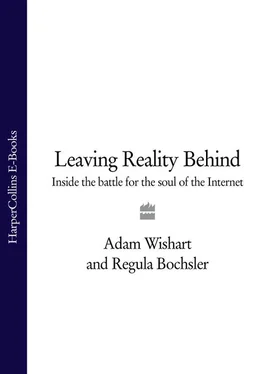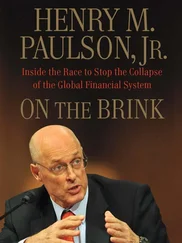The Economist once proclaimed that, ‘If the Net does have a god, he is probably Jon Postel’ – and, with his long hair, bushy white beard and open-toed sandals, he does have the look of an Old Testament prophet. This Professor of Computing at the University of Southern California was a product of the hippy movement, and the key Internet Standard, the Transmission Control Protocol/Internet Protocol (TCP/IP), of which he was the co-author, chimed with his personality. Enshrined within the code was a dislike of central authorities and the promotion of individual freedom. Previously computer networks and telephone systems had depended on a central commanding authority – even making a local telephone call requires dialling a central exchange, which then routes the call back to the receiver. The US military thought this was a vulnerable way of setting up a communication system. The network that TCP/IP governed was to have none of this.
The Standards of the Internet were to eschew this kind of centrality. It was to be a network in which every computer that was attached to it was to have equal power and equal value to the network. The TCP/IP Standard was remarkable because it gave no favour to those computers on the network owned by corporations, governments or the powerful. As a consequence any computer could, in theory, attach itself to any other that would transfer information ubiquitously.
Most surprising at the time, the Standards rejected the dominant technology of networking: switches. A telephone call, for example, requires a continuous electrical circuit to be switched on – via switches at the local exchange and all the exchanges along the route. In contrast the idea of the Internet is that information – be it a voice stream, like a telephone call, or a graphic image or a text document – flows through the network in a series of discrete pieces. To send a large piece of information it is first divided up into ‘packets’ and then sent separately to the destination computer, where it is reassembled. The system has the power and flexibility of a central Post Office and, as with the postal system, every computer on the Internet has an address. These addresses, twelve-digit numbers, are unique. Also like a mail system, the Internet would collapse into chaos if the same information could be directed to two or more post boxes with the same address.
These two elements of the TCP/IP Standard – the distributed and equal network, and the sending of packets – make it rather like a ‘Mutual Post Office’, a co-operative movement of which anyone can become a member provided that they pay a small fee and follow the rules of TCP/IP. At its inception, the system offered several obvious advantages. For a start, it could not be destroyed by knocking out the central sorting office or telephone exchange; the packets of information could route around any temporary obstruction. The network could also grow like wildfire without the need for studious bureaucrats to diligently design and then control it. To become a member of the Mutual Post Office, one simply needed to attach a computer to another already on the network and agree to play by the rules.
The mutuality had a radical cultural impact. The system’s lack of control and regulation defined the early incipient Internet community. As wrote Kevin Kelly, former editor of WIRED magazine, ‘The US government, which indirectly subsidizes the Net, woke up one day to find that the Net had spun itself, without much administration or oversight, among the terminals of the techno-elite. The Internet is, as its users are proud to boast, the largest functioning anarchy in the world.’ This anarchy would not be easily controlled by governments, corporations or even by lawyers. Indeed, over the coming years it seemed as though the Internet’s many conflicts and lawsuits had their foundation hard-wired into the mutual details of this technology.
In the concrete building in Weggis, Juri and Franco were charged with getting the company on the Internet as a cheap and practical form of communication between Zürich and Vienna. Nobody considered the Internet as an important new medium, let alone as their new company’s focus or platform.
Eventually, after days of debate, the friends also managed to agree on a name, Combination-Combination, which was supposed to express their intention to combine the efforts of different people with different specialities in different places. It was in the universal language of hip youth – English – and contained an allusion to their technical know-how.
They decided to raise the money to fund the setting up of the necessary infrastructure and offices by servicing the rave scene, using their many multimedia skills to contribute to the experience. Five of them could contribute to this venture: Herbert, Hans and Juri were to create images to project on club walls using computers, and musicians Franco and Peter would compose sounds. The others were to think about their possible contribution to the larger group project – it was hoped that this would be the first step towards something bigger.
On the last evening in Weggis the group staged the official founding ceremony of Combination-Combination. They were thrilled that the bonds of old friendships were now united in a common destiny. In the meadow in front of the apartment they lit a firework and toasted their future with champagne. Franco, who had been given the position of the group’s ‘specialist in human resources’, was designated to make the official speech. He told the others that he hoped ‘we would succeed in shaping not only pioneering new technologies but also promising human relationships. And that we were a very special team and would be able to do so.’ Even today, Herbert goes into raptures when he remembers the founding of the group that he would so relentlessly drive. ‘It was a magic moment when all these brains came together to form a common will.’
Back home in Zürich, Thomas – the law student – wrote his first business letter, to the company founders. It contained a budget and asked everybody to send 5,000 Swiss francs (£2,000) as their individual share of the founding capital. ‘Dear Business Partners,’ it read. ‘How each one gets hold of this money is his private matter (fantasy and creativity!).’ With the money, the boys rented a tiny room in an empty office building and set about making parties happen.
Soon they were asked to provide the visuals for a rave in Basel. Dozens of TV screens were dragged into an old factory, where Juri hooked them up to his computers and fed them whirling graphics. The friends all wore the same clothes for the event, a uniform of a black suit with a Pepsi logo on the sleeve, pointedly turning the brand on itself.
After Basel, Hans and Herbert returned to Vienna and convinced a nightclub promoter to hire them. The plan was that Juri, who remained in Zürich, would produce the visuals on his computer and then send them down the line directly from one computer to another.
The day before the party, Juri set his computer in Zürich to dial the computer lab of the Academy of Applied Arts in Vienna, where Hans and Herbert were waiting. Nowadays computer files containing graphic images and animations amounting to the equivalent libraries of data are regularly swapped across large distances. Juri’s graphic file was tiny by comparison, but that did not make his task any easier. In Vienna Hans and Herbert watched as the line was connected and part of the file was slowly transferred. Then the connection broke, and Juri had to start again. It was a frustrating process. The boys were worried that failure to get the images on time would put their careers as party organisers in jeopardy.
Four hours later, the pictures arrived. The group knew that neither their nerves nor their wallets could cope with this sort of lengthy international transmission, so they found a more old-fashioned way to go about their business. From then on, when in similar straits, Juri would take out his computer’s hard drive and tape it to the underside of a seat on the express train from Zürich to Vienna. Herbert or Hans would wait at the station to retrieve it.
Читать дальше











